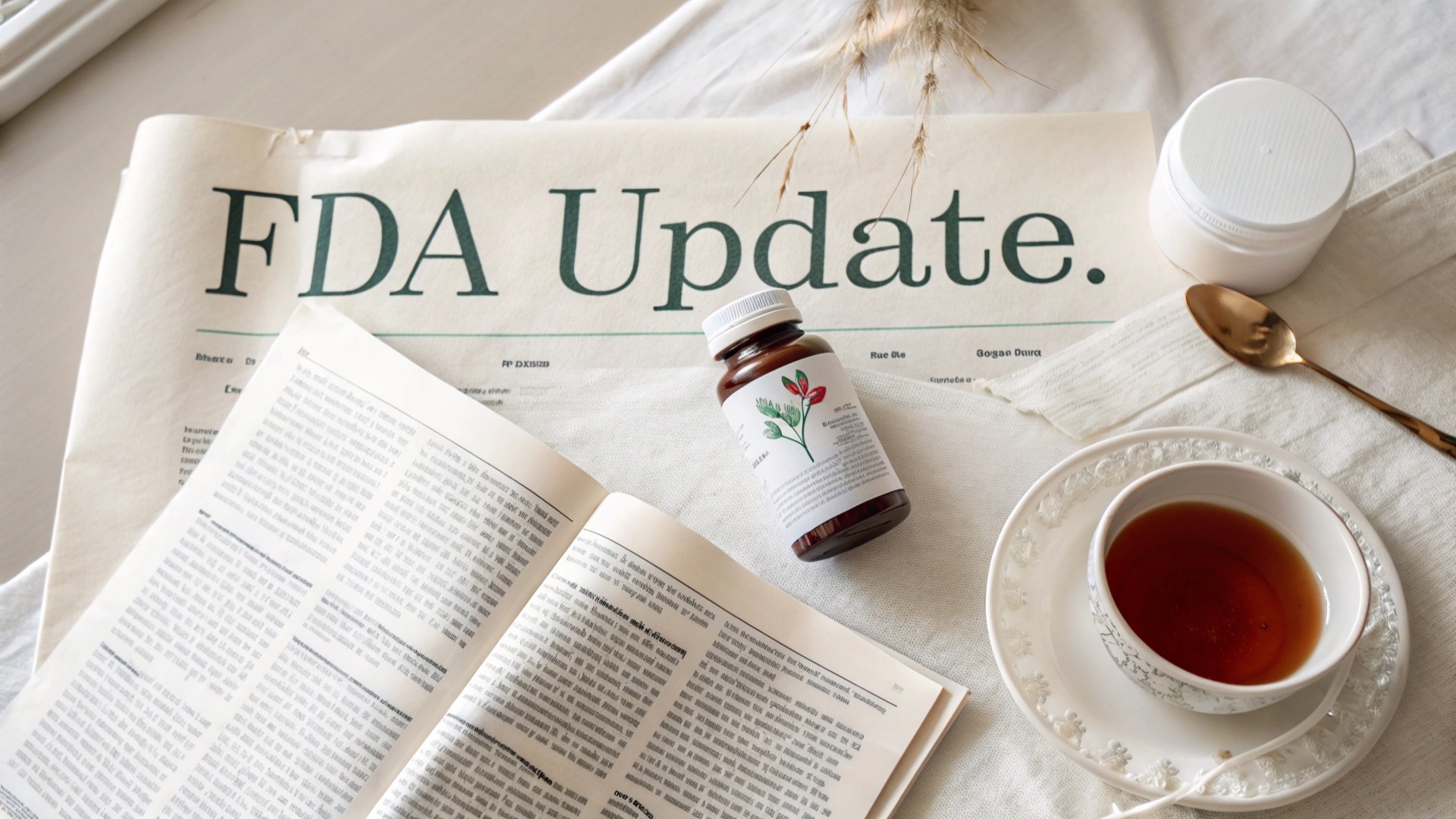Key takeaways
- NMN is directly absorbed into cells, while NR must first convert to NMN, making NMN a faster-acting and more efficient way to boost NAD⁺.
- Choose NMN for metabolic and muscular health, and NR for cognitive function, neuroprotection, and liver support, based on clinical use cases.
- NMN is under FDA drug review, while NR remains available as a dietary supplement with GRAS status, so legal access and use may vary by region.
Overview
It’s no secret that NAD⁺ has become the star supplement in conversations about anti-aging and longevity. Nicotinamide adenine dinucleotide (NAD⁺) is a coenzyme present in all living cells, playing a critical role in energy production, DNA repair, and cellular health.
However, as NAD⁺ levels decline with age, researchers have focused on ways to restore these levels to promote health and counteract the effects of aging.
Enter NMN (nicotinamide mononucleotide) and NR (nicotinamide riboside), two NAD⁺ precursors that have gained significant attention.
Both NMN and NR are touted for their ability to boost NAD⁺ levels, but which one is better? This article will explore the differences between NMN and NR, including their structure, absorption, health benefits, bioavailability, and safety profiles, to help you make an informed decision.
NMN vs NR: How they work to boost NAD⁺ levels
NMN (Nicotinamide Mononucleotide) and NR (Nicotinamide Riboside) are two leading NAD⁺ precursors in the vitamin B3 family. While both aim to restore declining NAD⁺ levels associated with aging, they differ in structure, absorption, and the biological pathways they activate. Understanding these differences is vital for selecting the right supplement to support your health and longevity goals.
NMN: Nicotinamide Mononucleotide
Nicotinamide mononucleotide (NMN) is a vitamin B3 derivative and a direct precursor to NAD⁺. It is naturally synthesized in the body through the NAD⁺ salvage pathway and found in foods such as edamame, broccoli, and avocado.
NMN supplementation has been shown to elevate NAD⁺ levels across various tissues, including the pancreas, liver, and skeletal muscle. This increase supports mitochondrial function, energy metabolism, and cellular repair mechanisms.
NR: Nicotinamide Riboside
Nicotinamide riboside (NR) is another NAD⁺ precursor in the B3 vitamin family. Structurally similar to NMN but lacking a phosphate group, NR is converted into NMN by NR kinases (NRKs) before entering the NAD⁺ synthesis pathway.
NR is present in milk and yeast and has demonstrated efficacy in increasing NAD⁺ levels and improving mitochondrial function. Clinical studies suggest benefits in areas such as cognitive health, metabolic function, and disorders related to aging.
How do NMN and NR work in the body?
One of the most important differences between NMN and NR is how they are absorbed and metabolized in the body. The variations in cellular uptake and conversion efficiency play a critical role in how quickly and effectively each compound supports NAD⁺ restoration.
Absorption and metabolism
One of the key differences between NMN and NR lies in how they are absorbed and processed in the body to increase NAD⁺ levels.
NMN (Nicotinamide Mononucleotide): Direct cellular transport
- NMN is transported directly into cells via a specific transporter called SLC12A8, which is highly expressed in the small intestine.
- This discovery challenged earlier assumptions that NMN needed to be converted before cellular uptake.
- Once inside the cell, NMN is rapidly converted into NAD⁺, supporting cellular repair and energy metabolism.
- The presence of SLC12A8 allows NMN to bypass intermediate steps in NAD⁺ biosynthesis, potentially increasing efficiency.
- Additionally, the gut microbiome can influence NMN absorption and its conversion into related NAD⁺ precursors.
NR (Nicotinamide Riboside): Indirect Conversion Pathway
- NR must first convert into NMN through the action of NRK enzymes (Nicotinamide Riboside Kinases) before contributing to NAD⁺ synthesis.
- NR and its reduced forms enter cells via equilibrative nucleoside transporters, which may affect the rate of uptake.
- This additional conversion step may slightly reduce the speed and efficiency of NAD⁺ production compared to NMN.
- Like NMN, NR is also influenced by the gut microbiome, which can affect its absorption and conversion pathways.
Conversion efficiency
Current research indicates that both NMN and NR are effective precursors for increasing NAD⁺ levels, though their metabolic pathways differ. NMN can be directly transported into cells via the SLC12A8 transporter, particularly in the small intestine, potentially bypassing some intermediary steps. Meanwhile, NR must first be phosphorylated by NRK to form NMN before entering the NAD⁺ salvage pathway.
While NR has demonstrated good oral bioavailability and dose-dependent increases in NAD⁺ levels in both humans and animal models, oral NMN administration has also been shown to elevate NAD⁺ concentrations in plasma and peripheral tissues rapidly. The choice between the two may ultimately depend on target tissues, individual variability, and formulation strategies.
NAD+ levels and aging
NAD+ levels naturally decline as we age, a process that has been linked to the onset of various age-related diseases, including cardiovascular disease, diabetes, and neurodegenerative disorders.
This decline can impair mitochondrial function, increase oxidative stress, and disrupt the metabolic processes that are essential for maintaining cellular health. As a result, the body’s cells become less efficient at producing energy and repairing damage, contributing to the aging process and the development of chronic conditions.
Supplementing with NMN and NR has emerged as a potential strategy to restore NAD+ levels and support healthy aging. By boosting NAD+ through these different precursors, it may be possible to improve mitochondrial function, enhance cellular health, and reduce the risk of age-related diseases.
However, while preclinical studies and early human trials have shown promising results, further research is needed to fully understand the long-term effects of NR supplements and NMN supplementation on aging and disease prevention.
The scientific community continues to investigate the therapeutic potential of NAD+ precursors, aiming to promote healthy aging and enhance health outcomes.
Health benefits of NMN and NR
Both NMN and NR share overlapping health benefits due to their ability to boost NAD⁺ levels, but each also offers unique advantages. NAD in supplement form is promising for supporting healthy aging and cellular function.
Shared benefits
Both have the following shared benefits:
- Anti-aging: Both NR and NMN precursors support cellular energy metabolism and combat age-related NAD⁺ decline.
- Energy metabolism: NAD⁺ plays a crucial role in mitochondrial function, which is critical for maintaining energy across all cells.
- DNA repair: Higher NAD⁺ levels improve cellular resilience by enabling efficient DNA repair mechanisms.
NMN-specific benefits
NMN supplementation offers a range of unique health benefits, primarily attributed to its ability to increase NAD⁺ levels in key tissues. Research has shown that NMN enhances mitochondrial function, improves skeletal muscle energy metabolism, and supports glucose regulation. These effects are particularly relevant for aging populations seeking to maintain physical performance and metabolic health. In both animal models and human studies, NMN has demonstrated promise in the following areas:
- Metabolic health: Enhances insulin sensitivity, liver function, and glucose metabolism.
- Muscle function: Enhances mitochondrial performance and muscle endurance, particularly in older subjects.
- Cardiovascular support: Reduces vascular dysfunction and promotes healthy blood flow.
- Neuroprotection: May delay cognitive decline and support brain health in neurodegenerative conditions.
- Anti-inflammatory potential: Some studies suggest that NMN reduces markers of inflammation associated with aging.
These multi-system effects position NMN as a compelling candidate in the realm of longevity and healthy aging supplements.
NR-specific benefits
NR also offers unique health advantages, particularly for:
- Cognitive health: NR has been linked to enhanced neuroprotection, reducing oxidative stress and mitochondrial dysfunction, which are critical factors in neurological disorders.
- Liver health: Research suggests that NR enhances liver function, reduces fat accumulation and inflammation, and may help prevent metabolic diseases.
- Hearing loss: NR supplementation has been shown to protect against noise-induced and age-related hearing loss.
Many studies on NR have been conducted in human subjects, providing strong clinical evidence for its benefits. In these clinical studies, the effects of NR supplementation on NAD+ levels are often measured in peripheral blood mononuclear cells and white blood cells, allowing researchers to assess changes in cellular NAD+ and monitor immune system stability.
Bioavailability and stability
Bioavailability, the extent to which a substance is absorbed and becomes available for biological use, is a crucial factor in evaluating NMN and NR.
Bioavailability
- NMN is rapidly absorbed into the bloodstream and converted to NAD⁺ within 15 to 30 minutes after oral administration. To learn when NMN is most effectively absorbed, see our guide on the best time to take NMN.
- NR has high oral bioavailability and efficiently raises NAD⁺ levels, even at relatively low doses.
- The oxidized form of NMN and NR can influence their stability and potency as NAD+ precursors, with some reduced forms being more potent and faster-acting.
- Nicotinic acid is another NAD+ precursor with its metabolic pathway and distinct stability profile.
- Nicotinic acid mononucleotide acts as an intermediate in NAD+ biosynthesis and can be formed from NMN or NR through specific metabolic processes.
Molecular stability
- NMN is prone to enzymatic degradation but is stable when formulated correctly.
- NR is an unstable molecule under certain conditions, but advancements in borate-stabilized formulations have significantly improved its stability.
Safety and regulation
Both NMN and NR have favorable safety profiles in clinical studies, but regulatory differences exist. In animal studies, dosing is often calculated based on body weight, such as milligrams per kilogram (mg/kg), to ensure an accurate assessment of effects and safety.
NMN safety
- NMN is considered safe in doses of up to 500 mg daily, as demonstrated in human studies.
- Clinical studies of NMN administration indicate that it does not significantly affect core body temperature, and repeated dosing has not resulted in serious adverse effects.
- However, its regulatory status has changed recently, with the FDA classifying NMN as a drug rather than a dietary supplement in the U.S.
NR safety
- NR is classified as Generally Recognized as Safe (GRAS), making it legally available as a dietary supplement.
- Clinical trials have shown that NR is safe at doses of up to 2000 mg/day, with only mild side effects, such as nausea or digestive discomfort.
- Studies using NRPT (NR + pterostilbene) show effective NAD⁺ boosting and safety, but results may not apply to NR alone due to pterostilbene’s influence.
Which one should you choose?
Choosing between NMN and NR depends on individual health goals, budget, and regulatory considerations. Here’s a quick comparison:
| Feature | NMN | NR |
| Absorption | Direct transport via SLC12A8 | Converted into NMN via NRKs |
| Key benefits | Vascular health, metabolism | Neuroprotection, liver health |
| Regulation | Classified as a drug (FDA) | GRAS status (FDA) |
| Stability | Stable with correct formulation | Improved with borate stabilization |
| Target audience | Aging and metabolic focus | Cognitive and metabolic focus |
- Choose NMN if you’re looking for enhanced vascular health or metabolic support.
- Choose NR if cognitive health, neuroprotection, or regulatory accessibility are higher priorities.
Bottom line
NMN and NR both represent exciting advancements in the field of longevity and NAD⁺ research. While NMN may provide faster NAD⁺ synthesis due to its direct transport mechanism, NR offers accessibility and strong evidence for neuroprotection.
Ultimately, the choice depends on your health needs, location, and personal preferences. Before starting supplementation, consult with a healthcare provider to determine which option aligns best with your health goals.
Research into NAD⁺ precursors continues to evolve, promising even more insights and applications in the future.
Frequently asked questions (FAQs)
- Can I take NMN and NR together?
Yes. While some people choose to take both NMN and NR, there are currently no human studies directly examining the combined use of these two NAD⁺ precursors. The idea of a synergistic or complementary effect remains hypothetical, as both compounds act within similar salvage pathways.
- Is NMN more effective than NR?
NMN may offer faster NAD⁺ restoration due to its ability to enter cells directly, but individual responses vary based on health goals, genetics, and absorption.
- Which is better for brain health?
NR has stronger clinical evidence supporting its role in neuroprotection and cognitive support, making it a preferred option for brain-related benefits.
References
- Sharma C, et al. (2022). Emerging Role of Nicotinamide Riboside in Health and Diseases. Nutrients.
- Yoshino J, et al. (2018). NAD⁺ Intermediates: The Biology and Therapeutic Potential of NMN and NR. Cell Metabolism.
- Yang L, et al. (2024). Pre-clinical and Clinical Comparisons of Nicotinamide Riboside and Nicotinamide Mononucleotide. Food Frontiers.
- Biță A, et al. (2023). Nicotinamide Riboside, a Promising Vitamin B3 Derivative for Neuroprotection. Frontiers in Pharmacology.
- Alegre-Cortés J, et al. (2023). Targeting NAD⁺ Biosynthesis in Aging and Metabolic Dysfunction. Phytomedicine








